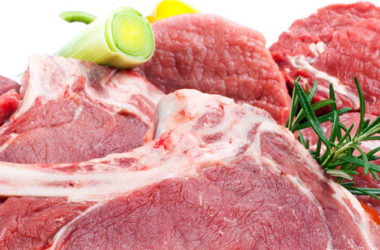Increased meat protein production and higher exports also mean more products are available in cold storage channels, according to Steiner Consulting Group, DLR Division, Inc.

Beef, pork, chicken and turkey in the refrigerator
According to the latest report from the United States Department of Agriculture on cold storage, at the end of January there were 2,317 million pounds of beef, pork, chicken and turkey in the refrigerator, 6.4 percent more than a year ago and 8.5 percent more than on average for five years. With a large amount of beef, pork and chicken already in the production line, we expect cold storage to continue to grow until spring and summer.
However, the distribution of the reserves by species varies, and the current conditions of the inventory have different consequences for the prices of red meat and poultry:
Beef
Beef: There has been a lot of discussion about the amount of meat cut that end users started cleaning to cover part of the spring price risk. The prices of 50CL meat soared last year, and some speculate that there is now more fat in the freezer to prevent a recurrence this year.
The USDA does not tell us what meat is in stock, but stocks without bones of meat at the end of January amounted to 456.8 million pounds, which is 8.4 percent less than a year ago, and only 1.6 percent more than a year ago . . When looking at the breakdown of beef stocks, stocks were higher in the Pacific (+ 17%), which probably supports higher exports. They were also higher in Western North Central cold storage facilities that are close to the packing plants.
However, stocks in the central Atlantic decreased by approximately 56 million pounds (-31 percent) compared to last year. Apparently, the high prices of fat trimming during January forced the processors to work in some of their positions. In general, we consider the figures for beef as constructive for the short-term market.
Pork
Pork: Total pork in the refrigerator at the end of January was 568 million pounds, which is 8.3 percent more than a year ago, but still 4.4 percent less than the average of five years. It can be seen that pork stocks are somewhat bearish, given the increase and / or the higher production expected in the next three months.
However, we are more inclined to consider the report as neutral in general, recognizing that the main cause of pork stocks was higher, due to the larger number of stored bellies. The total amount of pork reserves at the end of January was 44.7 million pounds, 219 percent more than the minimum levels of a year ago.
The minimum reserves of the belly last year created the basis for a sharp increase in prices during the summer months. The stocks of the belly have changed a bit, but are still lower than in 2014, 2015 and 2016. Pork stocks also remain well below average for five years, despite record production.
Exports of pork helped absorb most of the growth in pork stocks, and we believe that larger stocks of pork are needed to support increased exports. Due to the reasons for confidentiality, the US Department of Agriculture. UU It does not provide a breakdown of pork stocks by region, such as for beef and chicken.
Below you can see complete information about all the red meat and poultry factories in the warehouse at the end of January.


